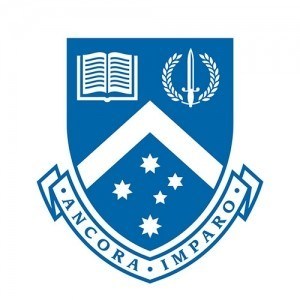Photos of university / #monash_uni
Design and Media Communication at Monash University offers students a comprehensive and innovative education in the fields of visual communication, media production, digital design, and interactive media. This program is designed to equip students with practical skills, creative thinking, and theoretical knowledge necessary to thrive in the dynamic industries of design and media. Students will engage with contemporary practices in graphic design, multimedia storytelling, user experience (UX), and digital media production, preparing them for careers across advertising, branding, web design, television, film, and new media platforms. The curriculum emphasizes hands-on learning through projects, workshops, and industry placements, fostering a strong understanding of design principles, media ethics, and technological skills. Throughout the program, students will explore the history and theory of communication, learn about audience engagement, and develop their own unique voice and style as media practitioners. Monash University’s state-of-the-art facilities, experienced faculty, and industry connections provide a rich environment for students to experiment and innovate. The program also encourages collaboration and interdisciplinary approaches, enabling students to work on real-world challenges and build a diverse portfolio. Graduates of Design and Media Communication will be well-prepared to enter various creative industries, undertake further research, or start their own ventures. The program’s flexible structure allows students to tailor their studies towards specific interests in digital media, visual communication, or media theory, making it an ideal choice for aspiring designers and media professionals seeking a comprehensive and contemporary education in the ever-evolving digital landscape.
The Bachelor of Design and Media Communication at Monash University offers students a comprehensive exploration of the dynamic fields of design, media, and communication. This degree is crafted to equip students with both creative and technical skills, enabling them to thrive in a rapidly evolving digital landscape. Throughout the program, students undertake foundational courses in design principles, visual communication, media production, and digital storytelling, building a strong base in both theory and practice. They are also encouraged to develop their critical thinking abilities and to understand the social, cultural, and ethical implications of media and design practices.
The curriculum emphasizes hands-on learning through studio-based projects, collaborative workshops, and industry placements, providing students with real-world experience and industry connections. Students can choose to specialize in areas such as visual communication, multimedia design, interactive media, or media marketing, tailoring their learning to align with their career aspirations. The program integrates modern digital tools and software, ensuring students are proficient in design and media production techniques that are vital in today’s multimedia industries.
In addition to technical skills, the course fosters creative innovation and problem-solving abilities, preparing students to address complex communication challenges. Graduates of this program are well-prepared for diverse careers in media production, digital content creation, advertising, branding, user experience design, and media consultancy. The program also encourages engagement with contemporary issues related to media ethics, sustainability, and the social impact of design, ensuring graduates are not only skilled practitioners but also thoughtful contributors to society.
With access to state-of-the-art facilities and supportive academic staff, students are guided through a diverse array of projects that hone their design thinking, communication skills, and digital literacy. The Bachelor of Design and Media Communication at Monash University aims to produce innovative, ethically-minded media professionals capable of making meaningful contributions to the ever-changing landscape of design and communication industries worldwide.
Program Requirements: The Bachelor of Design and Media Communication at Monash University is a comprehensive undergraduate degree designed to equip students with theoretical knowledge and practical skills in visual communication, design principles, media production, and digital technologies. Applicants must meet the general university admission criteria, typically including a completed secondary school qualification equivalent to an Australian Year 12 certificate with a competitive entry score. Particularly, a strong academic record in relevant subjects such as art, design, media studies, or humanities is advantageous. Portfolio submissions demonstrating creative work may be required during the application process to showcase students’ artistic abilities and conceptual thinking. Prospective students should have a genuine interest in media and design industries and demonstrate a capacity for critical analysis and innovative thinking. English language proficiency must be demonstrated by meeting the minimum requirements for non-native speakers, usually through tests like IELTS, TOEFL, or PTE Academic. For IELTS, a minimum overall score of 6.5 with no individual band less than 6.0 is typical. The program stipulates a balance of coursework covering foundational design principles, media production techniques, cultural studies, and digital communication platforms. In addition, students are expected to participate in practical projects, workshops, and industry placements where applicable, to gain hands-on experience in real-world scenarios. Advising sessions with faculty may be recommended to tailor learning pathways aligning with career aspirations, whether it be in graphic design, media production, digital marketing, or communication consulting. There are also prerequisites for specific elective units which may require prior knowledge of graphic software or media tools, emphasizing the importance of a strong technical foundation. Students should also be aware of the commitment required for a full-time study load spanning three years, including attendance at lectures, tutorials, seminars, and independent learning activities. To graduate, students must successfully complete all core and elective units totaling a specified minimum credit point requirement, along with maintaining satisfactory academic progress as per university policies. Scholarships and financial aid options are available for eligible applicants, and international students must adhere to visa requirements and health regulations applicable to study in Australia. Overall, admission is based on academic merit, creative potential, and the capacity to contribute to the university’s vibrant design and media community.
The Design and Media Communication program at Monash University offers a range of financing options to support students throughout their studies. Domestic students have access to various government-funded schemes, including HECS-HELP and FEE-HELP, which allow them to defer payment of tuition fees until they are earning above the repayment threshold. HECS-HELP is means-tested and provides income-contingent loans for eligible domestic students, reducing the upfront financial burden and making higher education more accessible. FEE-HELP is available for students who choose to pay their fees upfront or prefer to access loans for any remaining cost after government assistance, providing flexible payment options. Eligibility for these loan schemes depends on citizenship or residency status, and students must meet specific academic progress and course requirements to maintain access.
International students do not have access to government loan schemes and are required to pay tuition fees in full or through approved payment plans. Monash University offers various scholarship programs specifically for students enrolled in Design and Media Communication. These scholarships can significantly offset tuition costs and are awarded based on academic merit, talent, or financial need. Examples include merit-based scholarships that recognize high-achieving students, as well as need-based scholarships aimed at supporting students facing financial challenges. Many scholarships are renewable each year, provided students maintain satisfactory academic progress.
In addition to scholarships and government loans, students are encouraged to explore external funding sources, such as industry sponsorships, private grants, and regional or community-specific bursaries. Some students may also consider part-time work opportunities on-campus or within the local community to help finance their education. Monash University provides financial counseling services to assist students in planning their budgets and understanding their funding options. Furthermore, the university's online portal offers comprehensive guidance on applying for financial aid, scholarship opportunities, and managing study-related expenses. Overall, the funding landscape for Design and Media Communication students at Monash is designed to provide various avenues of financial support, ensuring that students can focus on their academic and creative pursuits with manageable financial commitments.
The Bachelor of Design and Media Communication at Monash University is a comprehensive undergraduate program that combines the creative disciplines of design, media, and communication. This innovative course is designed to equip students with a broad range of skills that are highly valued in today’s rapidly evolving media landscape. Throughout the program, students gain a strong foundation in visual communication, digital media production, user experience design, branding, advertising, and media strategies. The curriculum emphasizes both theoretical understanding and practical application, ensuring graduates are well-prepared for careers in various industries such as advertising, graphic design, digital media, content creation, and media management.
Students have access to state-of-the-art facilities, including design studios, media labs, and digital production suites, enabling hands-on learning experiences. The program encourages creativity, critical thinking, and innovation, supporting students to develop their own unique voice and style in the media communication field. Collaboration and teamwork are integral components of the course, often involving group projects, industry placements, and real-world case studies that mirror professional environments. Additionally, students learn about the social, cultural, and ethical issues surrounding media and design practices, fostering responsible and inclusive communication.
The program offers various electives and specializations allowing students to tailor their education according to their interests and career goals. It also prepares students for postgraduate study or industry certifications, providing a pathway into more advanced areas of design and media. Graduates of the Bachelor of Design and Media Communication can look forward to diverse career opportunities in media production, advertising agencies, design studios, corporate communication departments, and freelance creative work. With a focus on innovation and real-world relevance, this program aims to develop versatile, skilled professionals who can adapt to the dynamic media industry landscape.










